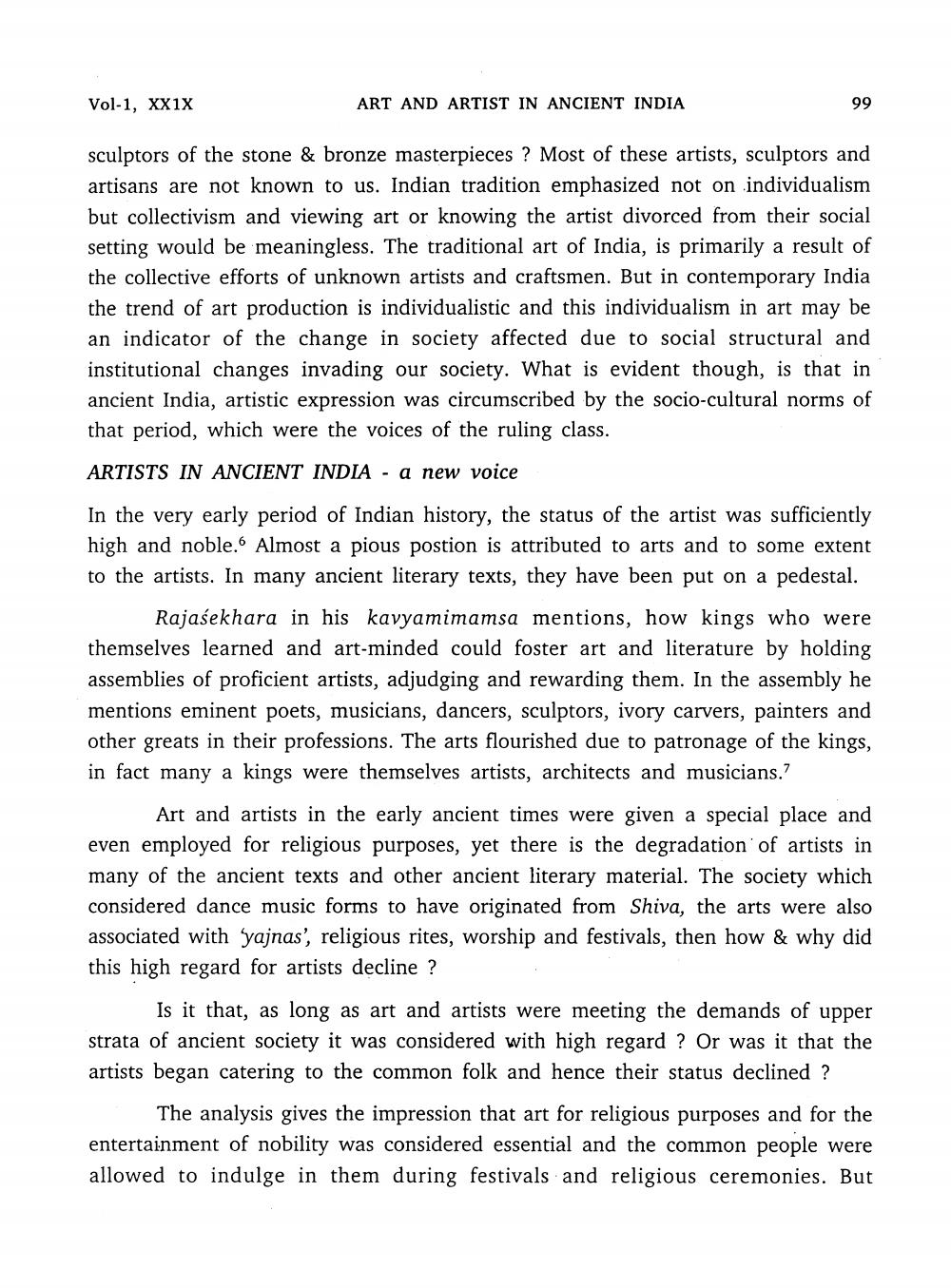________________
Vol-1, XX1X
ART AND ARTIST IN ANCIENT INDIA
99
sculptors of the stone & bronze masterpieces ? Most of these artists, sculptors and artisans are not known to us. Indian tradition emphasized not on individualism but collectivism and viewing art or knowing the artist divorced from their social setting would be meaningless. The traditional art of India, is primarily a result of the collective efforts of unknown artists and craftsmen. But in contemporary India the trend of art production is individualistic and this individualism in art may be an indicator of the change in society affected due to social structural and institutional changes invading our society. What is evident though, is that in ancient India, artistic expression was circumscribed by the socio-cultural norms of that period, which were the voices of the ruling class.
ARTISTS IN ANCIENT INDIA - a new voice
In the very early period of Indian history, the status of the artist was sufficiently high and noble. Almost a pious postion is attributed to arts and to some extent to the artists. In many ancient literary texts, they have been put on a pedestal.
Rajasekhara in his kavyamimamsa mentions, how kings who were themselves learned and art-minded could foster art and literature by holding assemblies of proficient artists, adjudging and rewarding them. In the assembly he mentions eminent poets, musicians, dancers, sculptors, ivory carvers, painters and other greats in their professions. The arts flourished due to patronage of the kings, in fact many a kings were themselves artists, architects and musicians.?
Art and artists in the early ancient times were given a special place and even employed for religious purposes, yet there is the degradation of artists in many of the ancient texts and other ancient literary material. The society which considered dance music forms to have originated from Shiva, the arts were also associated with yajnas', religious rites, worship and festivals, then how & why did this high regard for artists decline ?
Is it that, as long as art and artists were meeting the demands of upper strata of ancient society it was considered with high regard ? Or was it that the artists began catering to the common folk and hence their status declined ?
The analysis gives the impression that art for religious purposes and for the entertainment of nobility was considered essential and the common people were allowed to indulge in them during festivals and religious ceremonies. But




